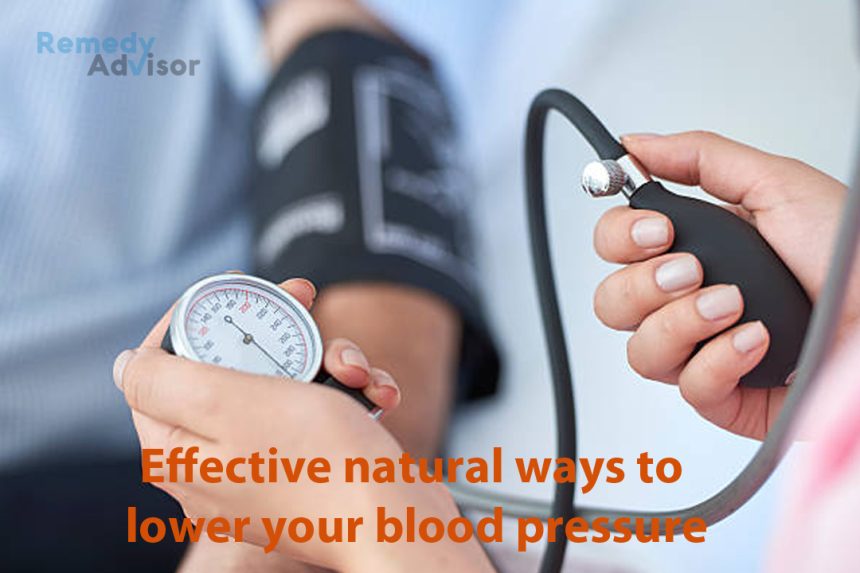If your blood pressure is above 140/90, you may already know that taking steps to lower it will reduce your risk for heart attack, stroke, kidney failure and other serious ailments.
You might not know that the same steps are beneficial if your pressure is in the pre hypertensive stage (120/80 to 139/89). Even if your pressure is below 120/80, you’ll enjoy long-term health benefits if you make certain lifestyle changes…
Lose weight
Not everyone with high blood pressure is obese, and not all obese people have high blood pressure. But for most people, losing weight reduces blood pressure.
Rule of thumb: A loss of one pound of body fat brings a one-point drop in systolic blood pressure (the upper number). If you need to lose weight, set realistic goals. Plan to lose about one to three pounds a month.
Exercise regularly
Exercise pumps up your metabolism, helping you burn more calories and preserve muscle tissue. Exercise seems to have a direct pressure-lowering effect, too.
Finding: When sedentary people began exercising regularly, their systolic pressure fell about 10 points.
Walking is an excellent form of exercise. Here’s how to pack more walking into your everyday life…
- Walk or bike to work, on errands, etc. If it’s too far to do so, consider parking your car a block away or getting off one stop early on the bus or train.
- Walk as much as possible while at work. Take stairs instead of elevators. Walk to a coworker’s office instead of telephoning. Take a brief walk at lunchtime and during each work break.
- At day’s end, take a 15-minute walk with a friend or family member. A late-afternoon walk helps you unwind and takes the edge off your appetite.
Reduce sodium intake
The salt industry has been pushing the idea that only a minority of “salt-sensitive” people has to worry about the pressure-raising effects of sodium.
Reality: For most people, restricting sodium intake reduces blood pressure by two to three points.
Americans eat a great deal of salt without realizing it. Fast food pizzas, hot dogs, hamburgers, etc.are often loaded with sodium. So are canned foods, frozen dinners, prepared salad dressings and sauces, processed poultry and meat, pretzels, potato chips and smoked fish.
I tell my patients to avoid table salt and salty foods whenever possible. An adult needs only 200 mg of sodium a day. A single roast beef sandwich contains four times that amount.
In the supermarket, check labels for sodium content. When you cook, season with herbs instead of salt.
Increase potassium intake
An analysis of 33 different studies by Paul K. Whelton, MD, of Tulane University in New Orleans, found that the systolic blood pressure of people who took potassium supplements dropped an average of five points. Potassium supplements are okay, but it’s better to get your potassium from foods.
Potassium-rich foods include apples, melons, bananas, potatoes, tomatoes and nectarines.
Each day, have at least two servings of fruit and three servings of fresh vegetables. Juices are rich in potassium. Watch out for tomato juice, though. Most brands of tomato juice are sky-high in sodium.
Reduce meat consumption
Vegetarians tend to have lower blood pressure than non-vegetarians. Why? One possibility is that the antioxidants in fruit and vegetables help lower blood pressure.
Another is that the calcium in fruits and vegetables is easily absorbed. Calcium seems to help reduce blood pressure.
Reduce alcohol consumption
In some individuals at least, regular drinking raises blood pressure. For these people, abstaining brings significant declines in blood pressure.
Do relaxation exercises
Psychological stress causes a transient rise in blood pressure, but doctors still don’t know whether stress has any long-term effects.
It’s clear, however, that relaxation exercises can bring lasting reductions in blood pressure. Many individuals who practice relaxation regularly experience as much as a five-point drop in systolic pressure.
What to do
Twice a week for 15 minutes set an alarm clock so you won’t have to keep track of time sit on a comfortable chair in a quiet room.
Close your eyes. Relax your right arm until it feels warm and “floppy,” then move on to your right thigh, calf, ankle and foot, left thigh, calf, ankle and foot, left arm, abdomen and buttocks, chest, neck, jaw and forehead.
Once your entire body is relaxed, envision ripples on a lake, soft breezes blowing through grass or another soothing scene.
Severe high blood pressure
If your blood pressure is 140/90 or higher, your doctor will probably prescribe anti-hypertensive medication. Even so, lifestyle changes might enable you to get by on a lower dosage or reduce your blood pressure to the point that drug therapy is no longer necessary.







